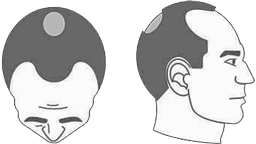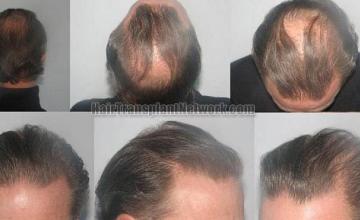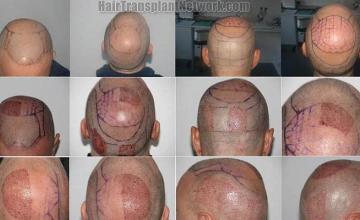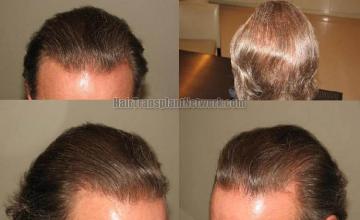Procedure detail
Summarization of a FIT procedure done in 2009
(3,781 grafts). This patients goal was a global light coverage so recommended
35fu/cm2. At 10mo f/u results were very natural and no sign of white dots. Good
growth!
1. ‘Megasession’ implies a graft count from 3,000 to 4,500
grafts. Above 4,500 grafts we classify the procedure as a ‘Gigasession’ as this
type of work is not done routinely in many clinics.
Here we present a
50-year-old patient, classified as a NW 2V, who was bothered by his bald vertex.
He had fine brown hairs. We recommended that he also refine his hairline and
lateral humps to reach a complete harmonious coverage. The journey took 4 days
and I will briefly describe our protocol.
We usually start by pre-op
pictures and a discussion with the patient to determine the patient's goals.
2. After taking detailed pictures, we jump in the painful moment. We
must shave the whole head in order to achieve such a large goal of 3,781 grafts.
We do not shave systematically. We listen to our patient’s desires and try to
accommodate them if we can. That is why we do offer the ‘FIT Patchy Shaven’ and
‘Unshaven FIT’ option available for patients who cannot be totally shaven.
However, in Megasessions it must all be shaved.
The next step is to start
our drawings in the recipient and donor areas to determine the surface to treat
- we assess natural angulation of the hairs, donor density, and recipient
density with a Proscope. We like to be very systematic and leave little room for
a random approach. The only area I do not follow a systematic pattern is when I
make incision sites for the hairline. I usually follow my immediate inspiration.
The hairline I build Monday will not be the same as the one I will do on
Tuesday.
3.The following pictures will also show the recipient and donor
areas the first day and second day (I didn't put the 3rd and 4th day). I wanted
to underline in these pictures how we move from area to area, respecting the
logic of nerves supply to allow a comfortable anesthesia and also our
willingness to work simultaneously in both donor and recipient areas. This
allows us to minimize the time the grafts are out of the body. That's why you
will see placing in one side and donor open sites in the opposite
side.
4. Post-Op pictures summarizing the entire work done by the WHTC
team under the close supervision of Dr. Mwamba.
5. We usually shampoo
the patient’s head every day during the surgery….and if still in town, the first
day Post-op. We take this opportunity to review the Post-op instructions and
encourage the patient as he begins his year journey until full growth is
realized.
6.For the sake of better assessment of details of our work, we
take before and after pictures that we can show to our patients and to the
general public (with the patients’ permission). We sincerely thank our patients
as the pictures help many that are seeking Hair Restoration Options. Photos help
them to make the right decision whether to proceed with surgery or not and which
Doctor to choose based on the proven results. Photos can also encourage those
with hair loss that there is hope for them also. We realize that results vary
from person to person since there are many factors involved in the process and
each case is different. We strive to post as many different cases as possible so
that many scenarios are represented with good results.
Bald class

Norwood stage 3 Vertex
In terms of the receding hairline, stage 3 vertex balding is a less drastic version of stage 3.
However, people experiencing stage 3 vertex balding will also begin losing hair on the crown of their head. This often starts as one small bald spot.



